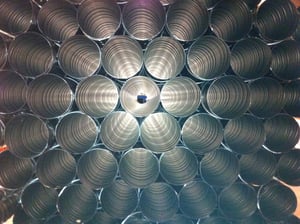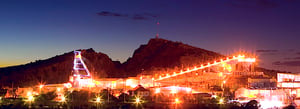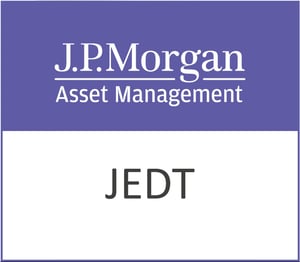Pulsar Helium Inc (TSXV:PLSR) is the topic of conversation when Auctus Advisors’ Co-Founder and Head of Research Stephane Foucard caught up with DirectorsTalk for an exclusive interview.
Q1: With the meteoric rise of helium prices, it’s become more popular than ever with investors. Could you just remind us of the Pulsar Helium story?
A1: I think you’re right, the background story has really been the rise of the price of helium over the last four years. Effectively, helium has moved from a niche gas to something much more strategic, given its importance for space, medical and tech, while at the same time, the only strategic inventory of helium in the world, located in the US, has been rapidly depleted. As a result, the price of helium has been multiplied by 3 to 5, to $600 to $1,000 per 1,000 cubic feet.
So, to put things in perspective, this represents 30 to 50 times the US natural gas price, that’s quoted as the NREAP. So, of course, given this dynamic, no wonder that investors are paying attention.
The background of Pulsar Helium is fascinating as well. The company has two assets, one in Greenland and one in the US, in Minnesota, and because Minnesota is really the focus of the ongoing action and where we have the best visibility on the potential value creation in the near term, this is really what I will focus on.
So, a bit of history.
In 2011, the previous owner of the lease in Minnesota drilled a well. They were looking at the time for nickel. They did not encounter nickel, but they had a gas kick at 500 meters.
The well could not be controlled and it flowed freely at high velocity for four days. At the time, the gas was measured to contain over 10% of helium, which is extremely high. Some CO2, some nitrogen, but hardly any hydrocarbon.
Something important was that the pressure did not drop, which suggested that the well had encountered an important volume of natural gas. Of course, at the time, helium was not very well known. There was not much hydrocarbon and basically things were left as they were.
Ten years later, while looking for overlooked helium assets, the founders of Pulsar got their hands on this Minnesota license. The business was IPO’d on the TSX in Canada to raise some equity to fund the drilling of a well, twinning the existing well. The idea was to try to understand the potential of the helium discovery.
One year later, an appraisal well called Jetstream 1 confirmed a structure that actually extended much deeper than expected. The well was also tested at a rate of just below one million cubic feet a day and the helium concentration was measured to be up to 14.5%. So that was even more than was expected.
Fast forwarding to today, a reserve auditor has estimated the structure could hold 1.4 BCF resources of contingent and prospective of helium in an upside case of almost 3 BCF. In addition, there is 10 BCF of prospective resources of CO2 have been encountered with what is estimated an upside case of 21 BCF. This is very large.
So, the story is now about derisking this large prize and confirm that basically those large volumes are really there and are commercial. In a success case, the shares are worth a multiple of current level.
Q2: What makes the company so different from other helium names?
A2: Well, there are a few helium companies listed in the stock exchanges in Australia, in the UK, in Canada, but they often either carry more risk than Pulsar or they have much smaller prize.
So first the concentration of helium at Pulsar is very high. As mentioned, we talk about 10 to 14%, this is actually one of the highest, if not the highest among the publicly listed company. Why is that important? Because it has very positive implication on volumes and the commercial threshold. If you look at the North American names, 1 BCF of helium is a lot. In addition, with large volume of helium per well, the development cost for the company is likely to be very low.
Second, if we look at the location of their helium assets, we talk about the US. This is obviously much lower risk than say, Tanzania, where helium is being looked for as well. The location in the US is very close to infrastructure and market. Again, this is a big advantage, a big differentiator compared to assets say, located in the middle of Australia, because it basically means low cost to bring to market. Not to mention that in the US, you have a lot of service industry, this is basically unmatched and that means that anything can be done fast.
Third, the flow rate achieved at the appraisal well, at Jetstream 1, suggests commerciality, this is another very important differentiator compared to others. So, if you look at $1-2 million cost to drill a well in Minnesota, as well as if you look at a small 5-well development, include surface infrastructure, you look at a cost of less than $20-30 million US dollars to basically develop that. A development like this would generate over 100 million dollars of pre-tax cash flow per year. Again, this is a lot, and not many companies can claim to have something as good as that, and that needs to be looked at in the context of the market cap of only $40 million for company.
Lastly, but not least, there is hardly any hydrocarbon in their helium asset in Minnesota. Why is it important? Because mostly helium is produced generally as a byproduct of hydrocarbon, in this case, you have, as a result, really clean, low emission development. Again, this is quite important.
Q3: The low-risk profile, low cost and large upside is really interesting but could you tell us a little bit more about the size of the prize?
A3: It’s interesting the fact that we’ve got a reserve auditor that has assessed these volumes, it’s a good name, it’s Sproule, it has a very good reputation. So, overall, the reserve auditor has estimated a mean case for the structure of 1.4 BCF of helium with an upside case of 3 BCF, this is contingent resources plus prospective resources.
To put things in context, at $650 per Mcf, which is recent price that has been disclosed by peers, that suggests up to $2 billion of revenue, and that’s just for the helium. If you add to that the 10 to 20 BCF of CO2 prospective resources that also can be sold almost locally, you add another $300-600 million of revenue, and that’s its minimum additional cost. So that prize is pretty large.
If we just look at what they have, which is the single well, this Jetstream 1 well that was drilled by Pulsar, and you look at the flow rates that the well was tested at, you analyse that and that suggests about $27 million of revenue during the first year, just from that well. Again, in the context of a market cap of only $40 million.
So what needs to happen for this prize to be converted into reserves? There are various important steps. The company has only confirmed or proven up a relatively small portion of the overall resources potential. So, two key things need to happen:
First, some of the structure with the prospective helium extends on adjacent lands that is held by the state, the group is already in discussion to be awarded these lands. Overall, their acreage position could be multiplied by five so that’s the first point.
The second point is that the company needs to de-risk the prospective resources in the structure from a geological perspective. The existing well was drilled only through the top of the structure with the seismic highlighting the fact it extends deeper. The structure is expected to extend 500 meters below the bottom of the well and most of the prospective resources are in that area.
What the company needs to do is to deepen its existing well, to go through that deeper area and there are probably some further exploration work that will be required in order to firm up, if you want, those volumes.
Q4: What’s Pulsar Helium doing next?
A4: The next step is a listing on AIM in London, it’s expected to happen in the fourth quarter and that’s to attract new investors, get a better valuation for the business and raise £5 million of new equity. Those proceeds will allow the company to deepen the existing well, as discussed previously, and continue the exploration work, again, with the idea to de-risk this very large volume I was talking about.
This is expected to be very, very material for the company, so watch this space.









































